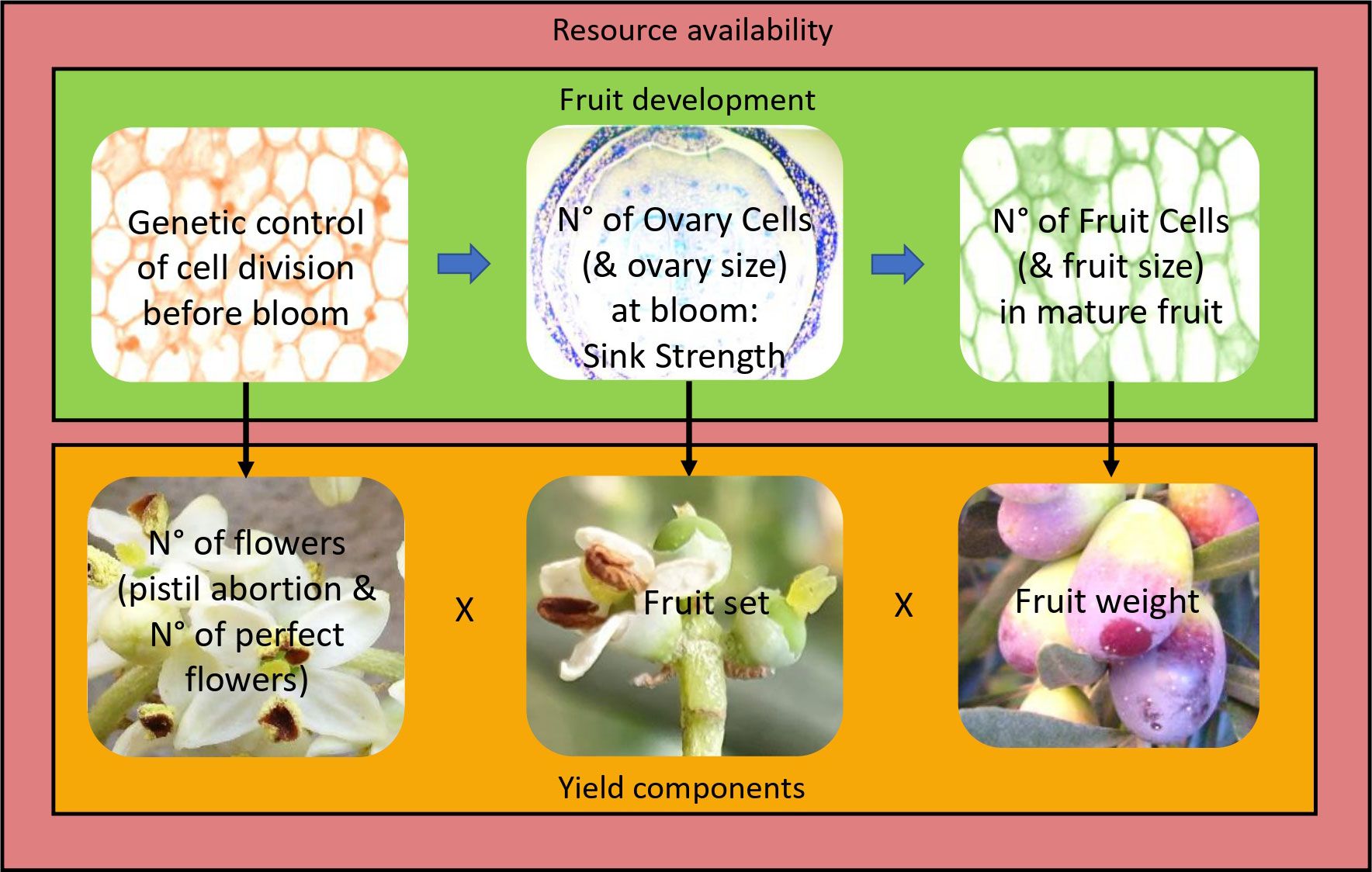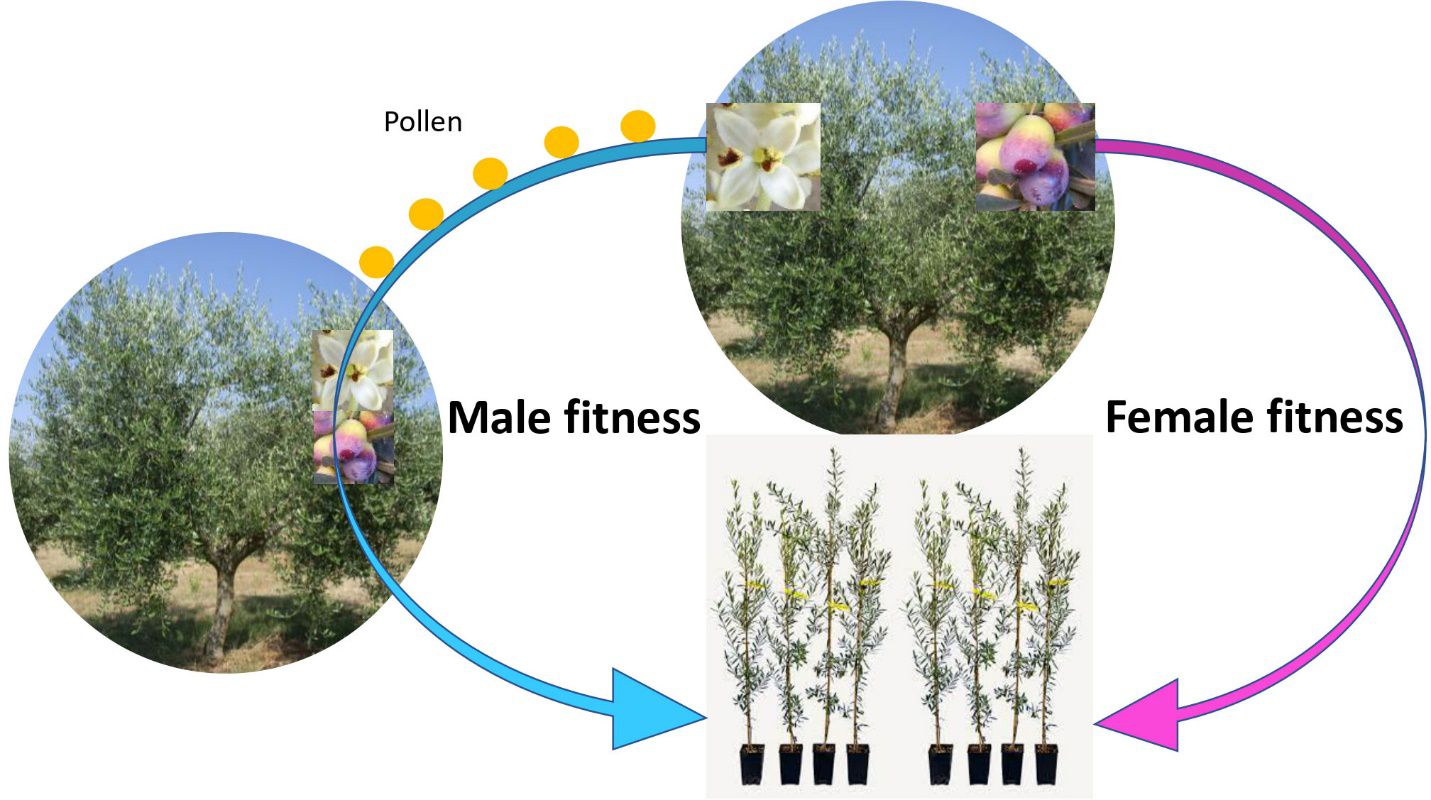- 1Consiglio per la ricerca in agricoltura e l’analisi dell’economia agraria (CREA), Centro di ricerca Olivicoltura, Frutticoltura e Agrumicoltura, Spoleto, Italy
- 2Dipartimento di Scienze Agrarie, Alimentari e Ambientali, Università Politecnica delle Marche, Ancona, Italy
- 3Dipartimento di Scienze Agrarie, Alimentari e Ambientali, Università degli Studi di Perugia, Perugia, Italy
A Corrigendum on
From flower to fruit: fruit growth and development in olive (Olea europaea L.)—a review
By Rosati A, Lodolini EM and Famiani F (2023) Front. Plant Sci. 14:1276178. doi: 10.3389/fpls.2023.1276178
In the published article, there was an error in the legend for (Figure 1 and Figure 2) as published. The Figure captions were inverted. The corrected legends appear below.

Figure 1. Proposed model of fruit development and yield formation. Cell division in the forming ovary (and other flower parts) is under genetic control. This determines cell number (and tissue size) and thus sink strength in the ovary at bloom. This in turn determines cell number in the fruit and potential fruit size. Yield is the product of the number of flowers (considering pistil abortion and thus number of perfect flowers) × fruit set × average fruit weight. All phases of fruit development and all yield components are modulated by resource availability (outside box), which is a function of the agronomic conditions (e.g., light interception, water and nutrient availability, biotic and abiotic stresses) and endogenous factors (e.g., alternate bearing, source–sink relationships, competition between vegetative growth and reproduction). Increasing resource availability will increase cell number and/or size and thus organ (flower/ovary/fruit) size at all stages of fruit development, as well as flower number, percent of perfect flowers, fruit set, and fruit weight. However, for a given resource budget, genetically larger flowers/ovaries/fruits, made up of more cells, will increase organ sink strength and competition. Thus, larger pre-anthesis flowers/ovaries will increase pistil abortion, and larger flowers/ovaries at bloom will decrease fruit set, in a compensatory manner between organ size and number, so that yield is virtually unaffected by organ size differences and mainly affected by the fruiting potential of the tree, as determined by resource availability. Arrows indicate how a fruit’s developmental stage affects the following stage (horizontal arrows) or a yield component (vertical arrows).

Figure 2. Schematic representation of male and female fitness. The tree invests in fruits to increase its female fitness (producing offsprings with 50% of the genome from the mother plant). However, producing pollen is just as effective at producing offsprings with 50% of the genome of the father plant, via pollinizing other trees. In fact, the biomass and resource investment per offspring might be smaller with the male fitness pattern. Redundant flowering (i.e., low fruit set) in olive, while being agronomically inefficient, is efficient in terms of fitness, thus in evolutionary terms.
The authors apologize for this error and state that this does not change the scientific conclusions of the article in any way. The original article has been updated.
Publisher’s note
All claims expressed in this article are solely those of the authors and do not necessarily represent those of their affiliated organizations, or those of the publisher, the editors and the reviewers. Any product that may be evaluated in this article, or claim that may be made by its manufacturer, is not guaranteed or endorsed by the publisher.
Keywords: cell number, fruit size, blooming, fruit set, ovary, pistil abortion, sink strength, yield components
Citation: Rosati A, Lodolini EM and Famiani F (2025) Corrigendum: From flower to fruit: fruit growth and development in olive (Olea europaea L.)—a review. Front. Plant Sci. 16:1556708. doi: 10.3389/fpls.2025.1556708
Received: 07 January 2025; Accepted: 17 January 2025;
Published: 05 February 2025.
Edited and Reviewed by:
Gaetano Distefano, University of Catania, ItalyCopyright © 2025 Rosati, Lodolini and Famiani. This is an open-access article distributed under the terms of the Creative Commons Attribution License (CC BY). The use, distribution or reproduction in other forums is permitted, provided the original author(s) and the copyright owner(s) are credited and that the original publication in this journal is cited, in accordance with accepted academic practice. No use, distribution or reproduction is permitted which does not comply with these terms.
*Correspondence: Adolfo Rosati, YWRvbGZvLnJvc2F0aUBjcmVhLmdvdi5pdA==
 Adolfo Rosati
Adolfo Rosati Enrico Maria Lodolini
Enrico Maria Lodolini Franco Famiani
Franco Famiani